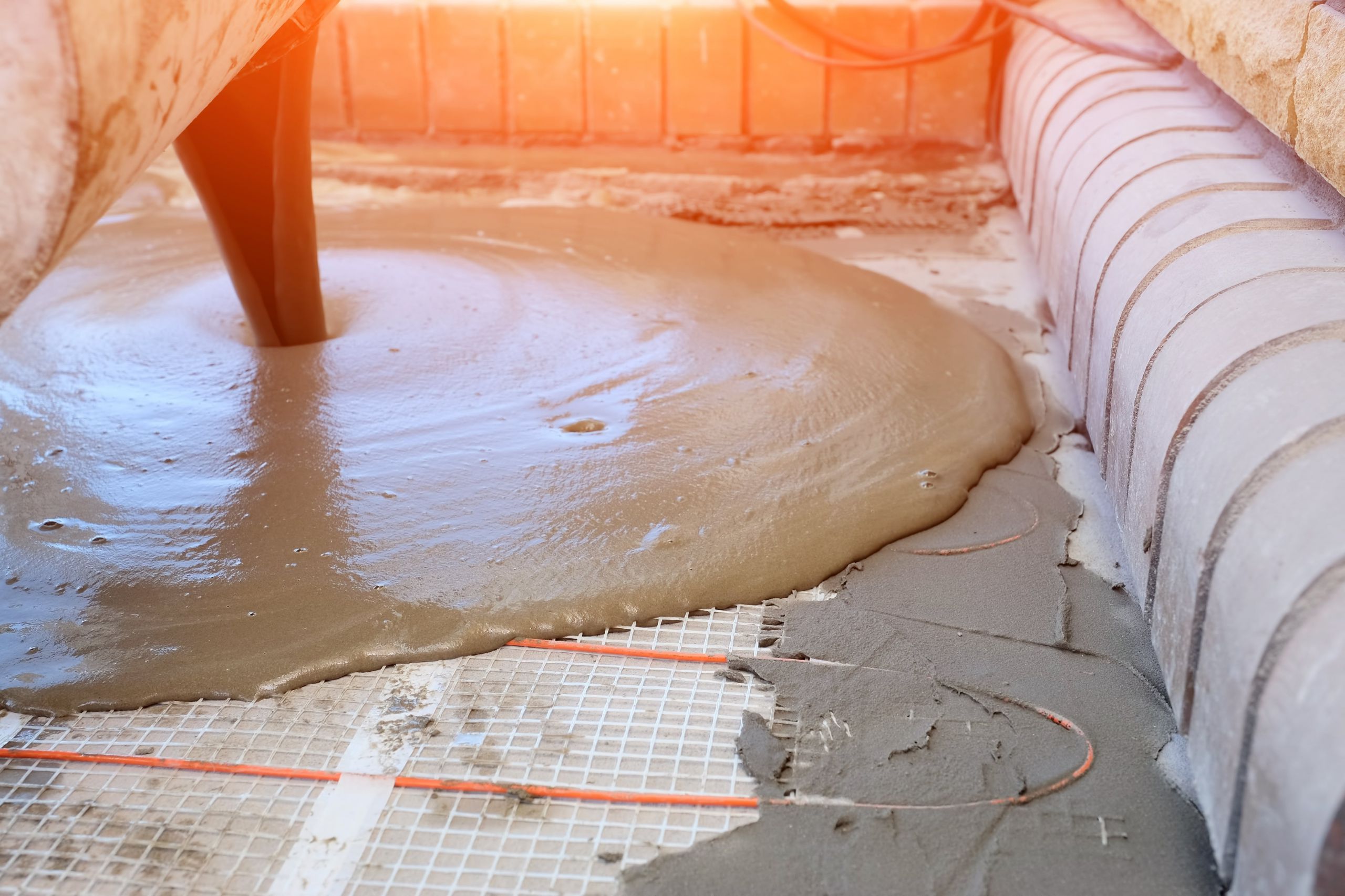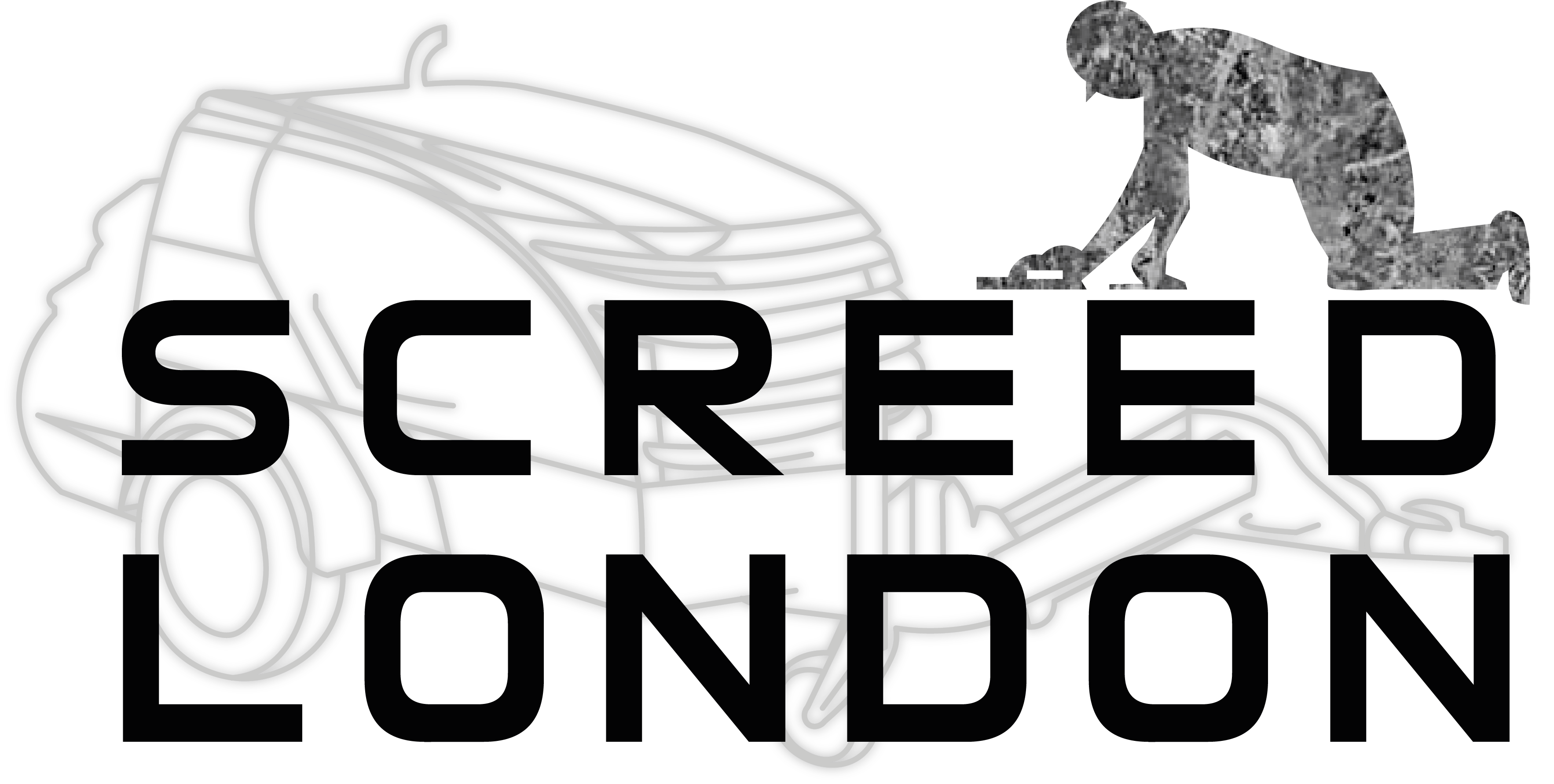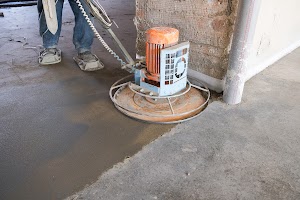Choosing Best Screed for Underfloor Heating London
Underfloor Heating Screed | Screed Over Underfloor Heating | Low Profile Screed Underfloor Heating
When it comes to an efficient set up for our underfloor heating (UFH), for your solid floored property, Screed London can ensure that you choose the best set up for your needs. Laying the pipework into something that aids the transfer of heat is part of all underfloor heating in London, and the heating elements for the underfloor heating are usually encased in a layer of screed before the installation of the final floor covering.
For hydronic underfloor heating, Screed London ensures that all heating pipes are secured to insulation panels on the floor slab fitted with moisture barriers, and the screed layer is laid over this to provide a level surface for installing the final floor finish.
When considering underfloor heating in London, traditional sand and cement screeds can be time consuming projects, with long drying times before final floor covering can be laid.
An underfloor heating system, like the ones Screed Lonodn install, cannot be utilised to accelerate the drying process as it can result in the cracking of screed due to quick drying.
At Screed London, we believe that using a single, experienced company to design and install can deliver the best underfloor heating in London, and best screed for underfloor heating in your London property. This is especially true as the company can then alleviate potential problems in the design and installation of both products. This single responsibility tends to result in a successful outcome for underfloor heating and screed work in London.
That’s where Screed London can help you choose screed for all your projects.
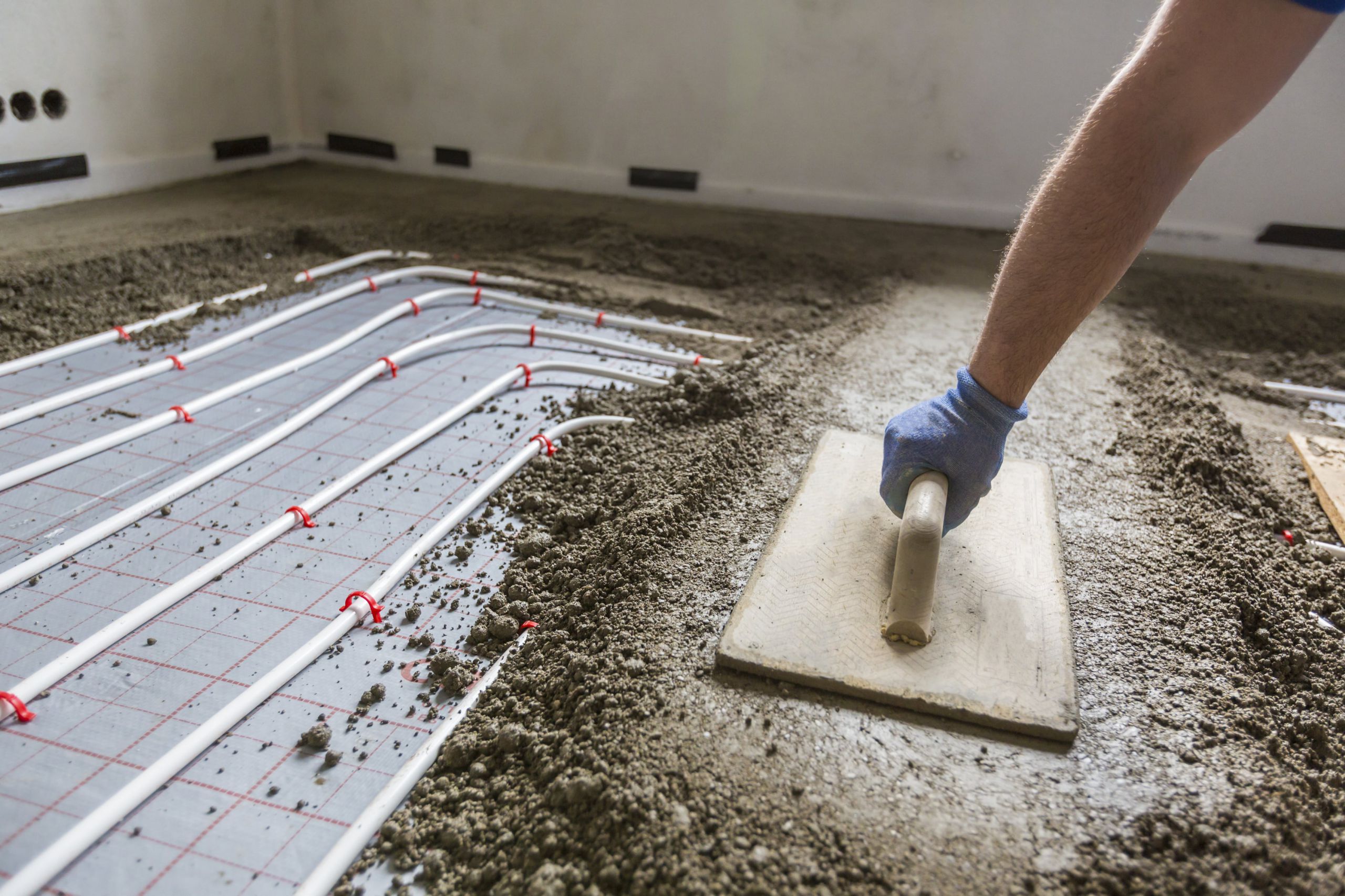
Underfloor Heating Screed London Installation - How it works ?
When it comes to underfloor heating in London, getting the installation done right is critical for safety and efficiency. Starting from a bottom, the subfloor is either a concrete slab or a beam and block which is insulated by a waterproof membrane. The membrane is then covered with either a thermal insulation layer of polystyrene or mineral wool.
For many of our screed over underfloor heating projects in London,, another vapor insulation is often fitted over it before pipes can start to be fitted, usually laid on a floor floor evenly and fitted to the underlay by clips (picture below).
At Screed London, for all our underfloor heating work in London, it is only after everything is prepared that we are ready to pour and place the screed. When the screed is dried, the flooring of your choice will be fitted.
What Is The Best Screed For Underfloor Heating in London Area?
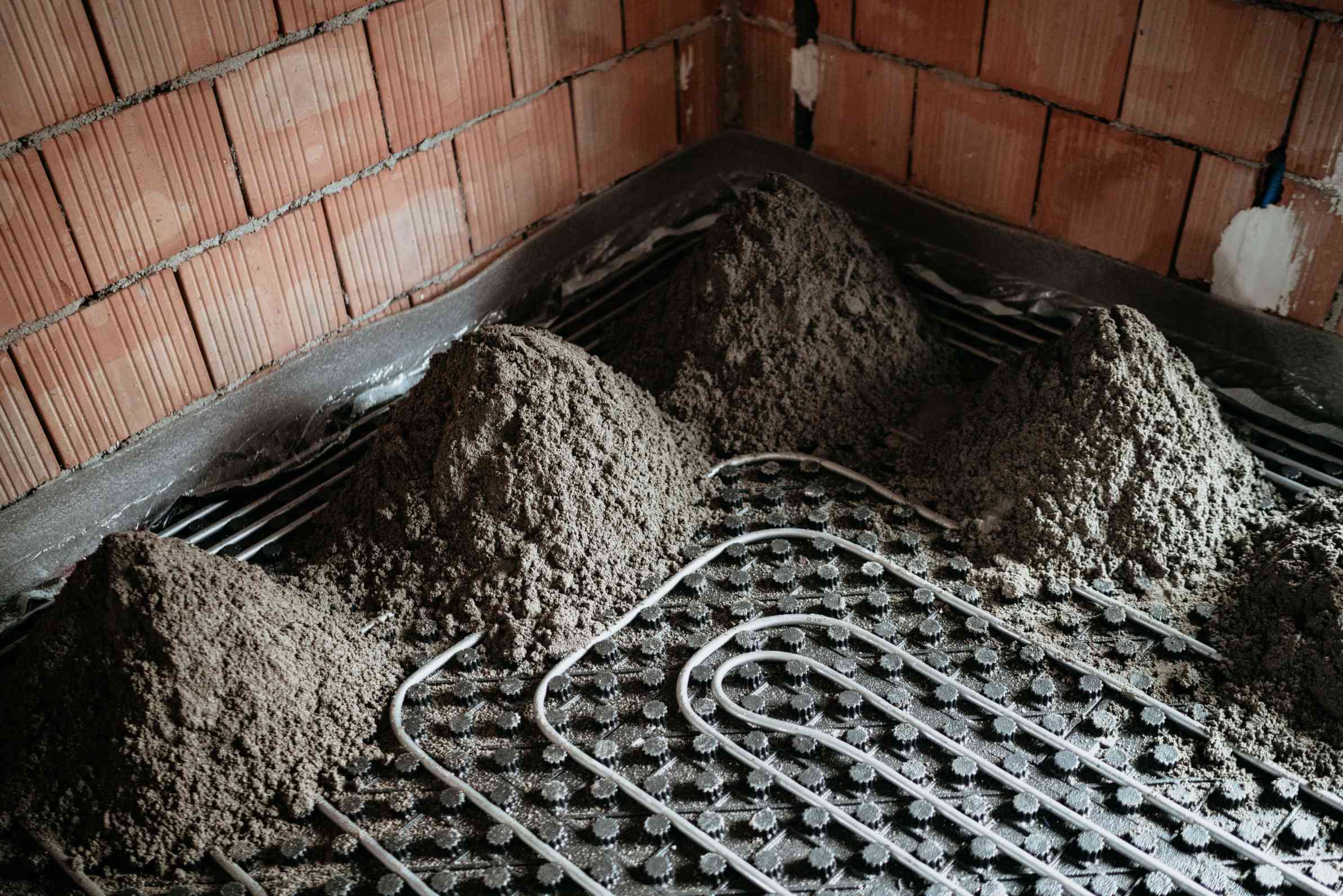
The most common type of underfloor heating screed in London is semi-dry screed, but it’s not necessarily always the best option. For some Screed London customers, liquid screed is the best option for their underfloor heating screed work, depending on the requirements of each individual project.
When it comes to underfloor heating screed, London properties with smaller floor surfaces usually require semi-dry screeds. Fast-drying mixtures are available from some manufacturers and allow semi-dry screeds to be applied to more urgent build projects.
Due to the fact that they can be easily poured directly onto a surface area, liquid screeds are often the best underfloor heating screed for London buildings, and do not require pre-mixing with water, unlike semi-dry screeds. As our experts at Screed London know, thanks to the free-flowing nature of liquid screeds, it can be used as the best screed for underfloor heating in London properties with larger surface areas, making it time and cost efficient.
Underfloor heating screed varies across London, but in the case of liquid screed, it dries faster and is less likely to crack, ensuring that the underfloor heating system in your London property can be used sooner to help dry the flooring.
Underfloor heating screed work in London can depend on the number of on-site tradesmen, so the quicker screed methods can be beneficial for keeping to schedule, as well as offering structural strength, and especially when proprietary mixtures are used in construction.
Different types of Underfloor Heating Screed London
Fast Drying
Screeds
When doing underfloor heating screed in London, fast drying screeds have accelerated drying times, meaning they are the ideal screed systems for underfloor heating, yielding the best results when applied using forced action mixers such as screed pumps or pan mixers. These types of screeds have additives mixed along with the cement sand mixture to improve their drying time.
Fast drying screeds are often preferred for efficient underfloor heating screed work in London, with many fast drying floor screeds allowing foot traffic to proceed as early as 12 hours after laying, thus allowing early installation of the final floor finish, allowing the heating system to be used much earlier.
Free Flowing
Screeds
When it comes to underfloor heating screed work in London properties, free flowing screeds are easy to install, with liquid being poured quickly across large areas, though they cannot be used in wet areas and have long drying times. Free flowing screeds are gypsum based liquid screeds that can be applied at reduced depths compared to the traditional screeds, making them one of the best screeds for underfloor heating projects in London premises, especially those with large areas, though, these screeds are not suitable for wet areas, or compatible with cementitious adhesives.
Proprietary screeds are highly recommended as the best screed for underfloor heating in London properties, and fast drying screed systems that perform well when used over underfloor heating, some of the commonly recommended free flowing screeds are Tarmac, Breedon, Cemfloor, Longflow.
Underfloor Heating Screed
When it comes to doing underfloor heating screed in London, the traditional methods are used in this kind of screeding. Ultimately, it is considered the best screed for underfloor heaeting in Lonodn premises.
Using this kind of underfloor heating screed involves mixing traditional sand and cement screed to a 1:3-4.5 with water and polypropylene fibres reducing surface micro-cracking within the screed, and applied to a depth of 75mm.
Put simply, this is considered within the indusctry as the best screed for underfloor heating in London homes and other properties, as the screed is mixed semi dry to an earthy consistency and the snowball test is the simplest and most effective way of judging the correct quantity of water.
Something known as the “snowball test” is used when doing underfloor heating screed in London. This test consists of creating a snowball like ball of screed which, if it holds together without evidence of excess water, is deemed to be of the correct proportion. If the snowball does not hold together then more water should be added to the mix.
Traditional cement sand screeds are suitable for various construction methods ranging from bonded, unbonded, floating and heated floors. These are often used as they are considered the best screed for underfloor heating at London premises.
The Process of Underfloor Heating Screed London
When doing underfloor heating screed work in London, we follow a trusted process: when pouring concrete, a screed is usually a long length of straight 2 x 4 board or an aluminum bar manufactured for the purpose. Whatever object is used, screeding is done by drawing the tool across the wet surface of the st concrete, with the screed long enough so that the ends can rest on opposite sides of the concrete form.
For all low profile screed work for underfloor heating in London premises, the screed is drawn toward workers with a sawing, scraping motion that simultaneously smooths the surface and pushes excess concrete into any gaps or hollows. It is preferable to have two workers, one on each side of the screed, especially for large slabs. . Aluminum screeds are often considered the most precise, so can be the best screed for underfloor heatings at many of our London projects, always providing a straighter edge.
Screeding is the first step in finishing concrete, and is not intended to produce a smooth final surface, which is created by “floating” the concrete with one or more smooth-faced tools that are designed to draw up fine aggregate and cement to the surface of the slab. When doing screed over underfloor heating in London properties with large slabs required, such as driveways or garage floors, the surface is floated with a large tool known as a bull float.
Smaller wood and metal hand floats are used for sidewalks and other surfaces, but whatever tools are used, they can create a smooth surface only if the concrete has first been screeded to create a solid layer with no voids or gaps.
